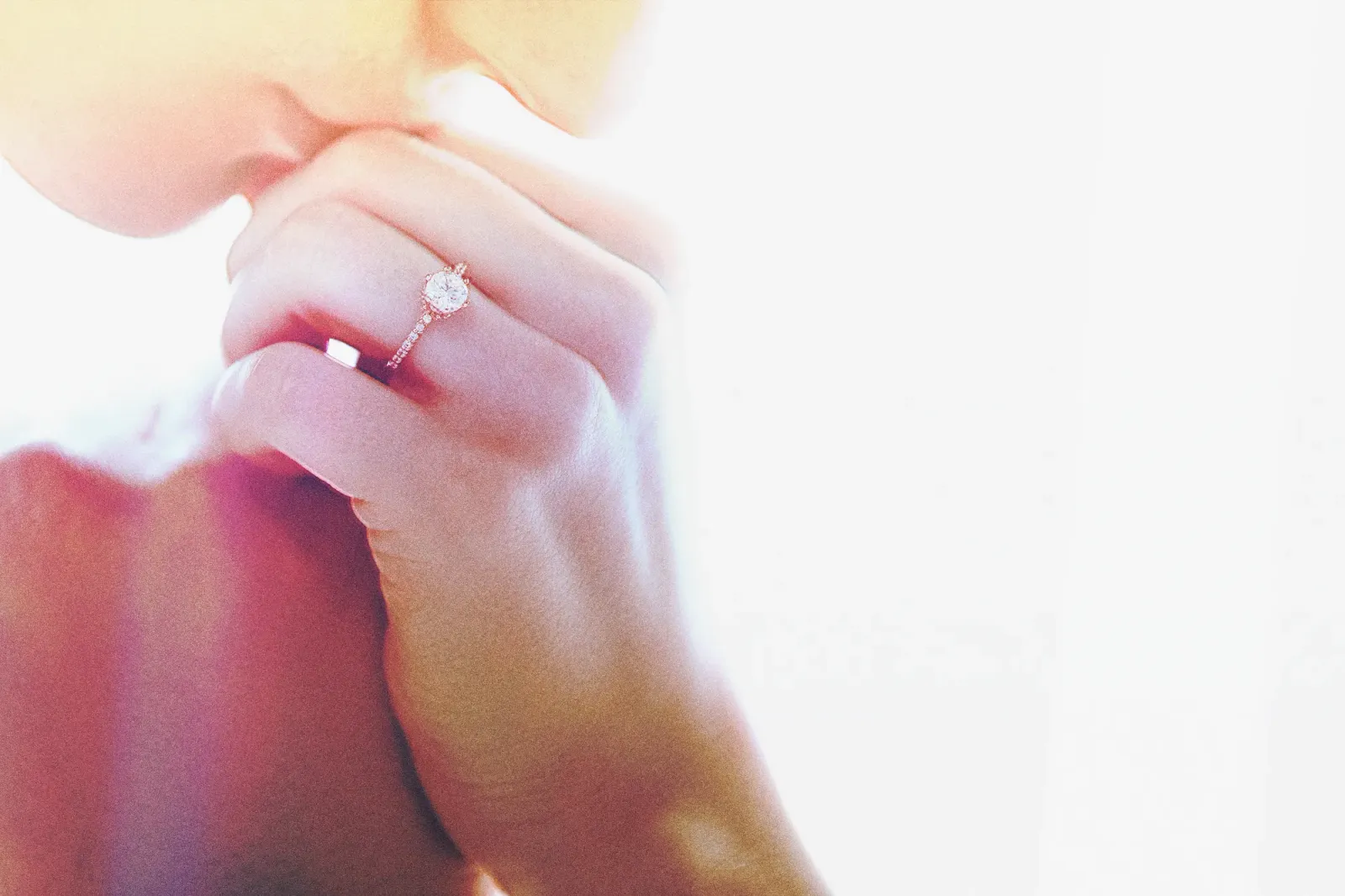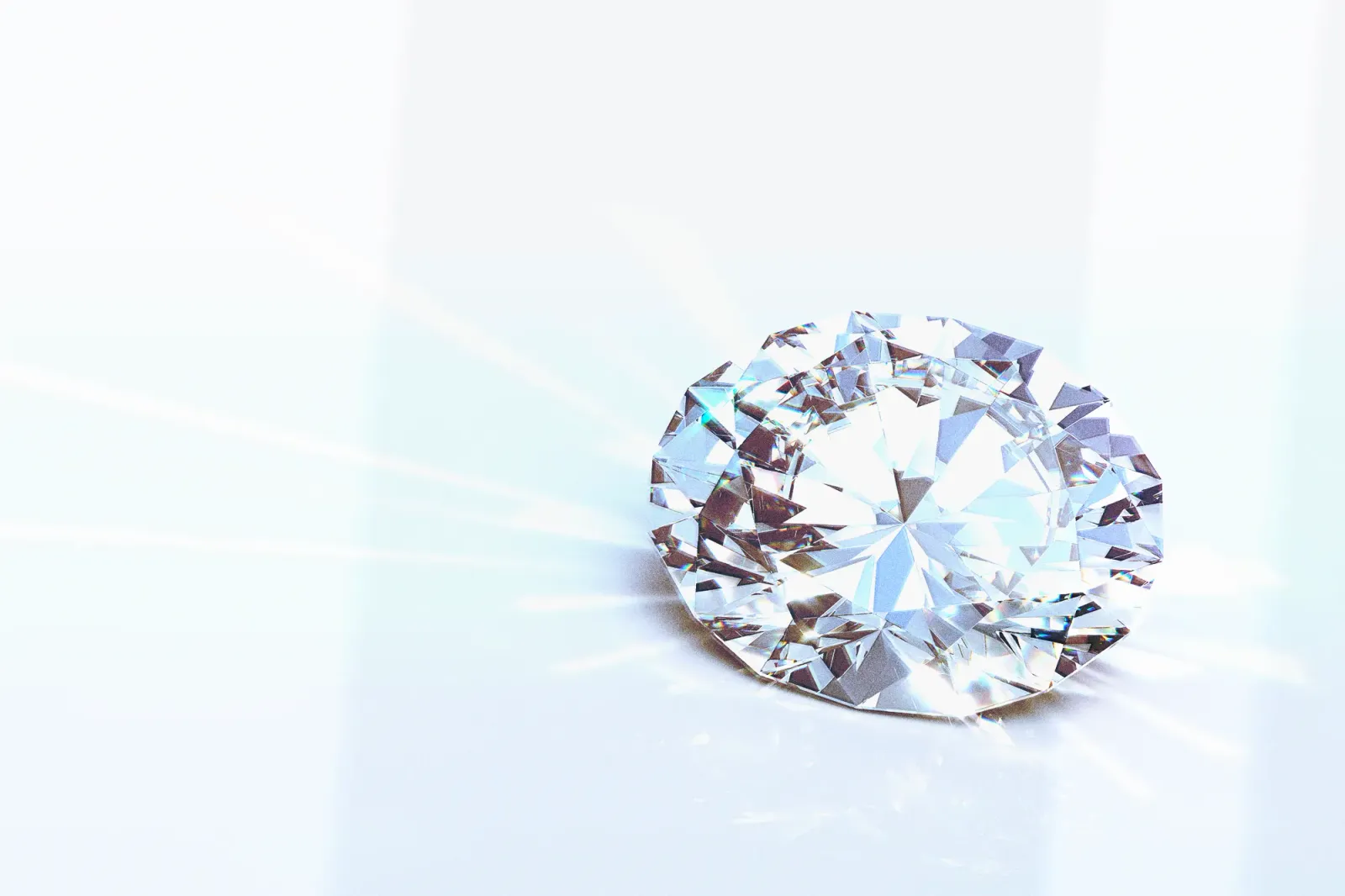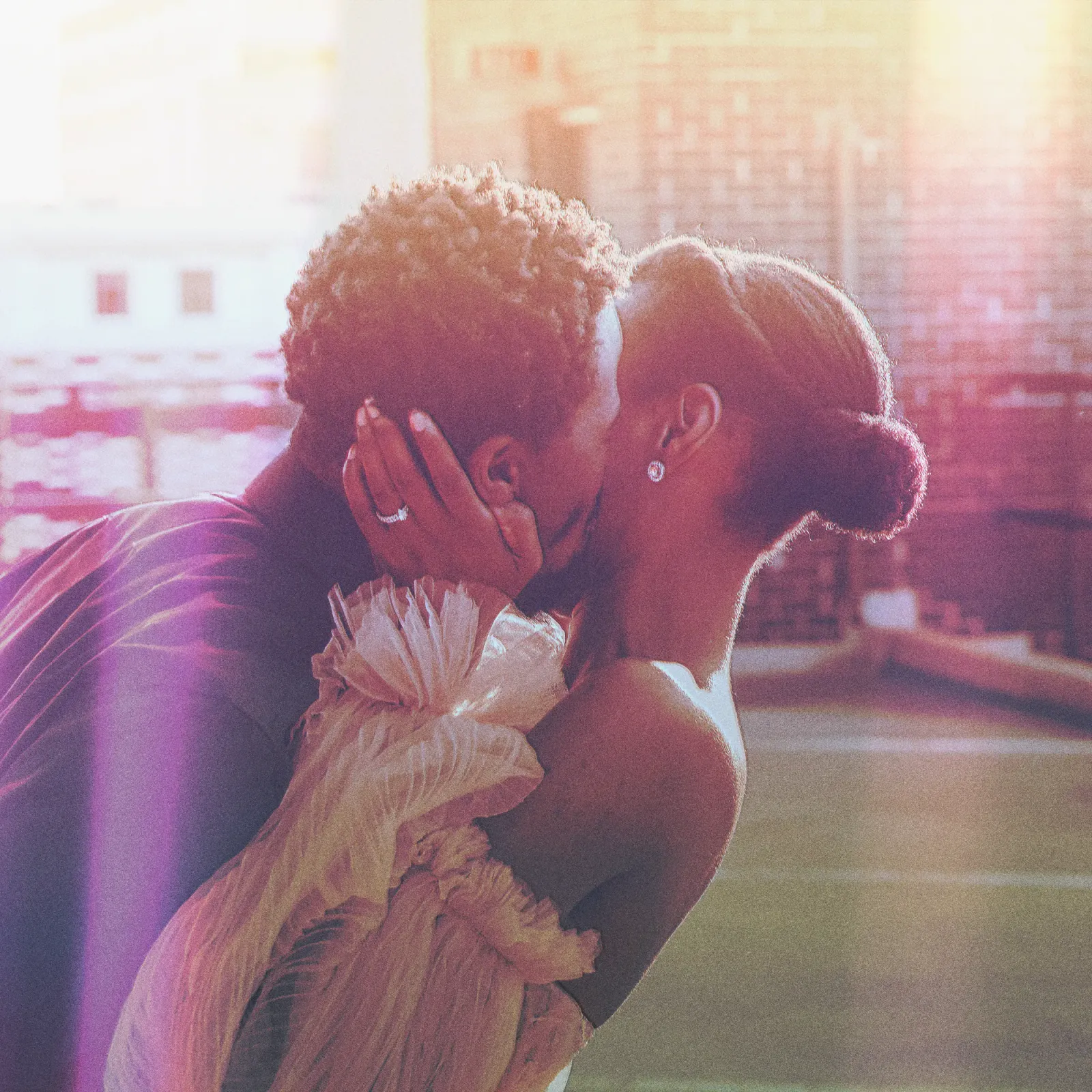Your first thought when kicking off your engagement ring search is probably the center stone, and the seemingly dizzying number of decisions to be made about choosing a diamond. But your choice of metal is just as important - it determines the look of your ring, and the metal color plays a significant part in determining which qualities to look for in a diamond. White gold, yellow gold and platinum are the most popular and most traditional choices, with rose gold rising in popularity too. You might have a strong instinct as to which she'll love most, or you might be searching for a specific look, but before we drill down into the details of each metal, these are the main things to consider.
Personal taste / ring look style
Personal taste is the main driver for choosing a silver metal like platinum or white gold versus a warm metal like yellow or rose gold. Think about which jewelry metals your other half already wears, and whether she shows a strong preference. If you're buying online, many rings are available in a choice of metals so you can easily see how the different metals look in different setting styles.
The diamond
Keep that center stone (or stones!) in mind when choosing your metal. If you're looking at diamonds in the colorless D - F ranges, then you should opt for a silver toned metal like platinum or white gold. These metals will reflect white light well, and show off the natural brilliance of the diamond. However the light reflected back from yellow or rose gold has a warm hue, and will be reflected in the diamond, dulling its brilliance, or white light return (more on that here). This is especially true for diamonds like the Emerald cut, which have larger facets and show color more.
A yellow gold or rose gold setting will complement diamonds with a lower color grade. The color of the metal sets off the diamond, and your eye sees a whiter stone. Because the comparative yellow of the metal tones down the slight yellow hue of the diamond, it can help you out if you're on a set budget and want to put more of your money against the quality of diamond cut or the carat weight, rather than against the color grade. You can read more on choosing the best color grade for your diamond here.
Top tip: if you're opting for a colorless diamond but love the look of a yellow or rose gold setting, choose a ring with white metal prongs to ensure you keep that brilliance you've paid for. Take a look at this classic 18k yellow gold solitaire setting from Blue Nile which features platinum prongs and would show off any diamond beautifully, whilst this 14k rose gold halo from James Allen is best set with a lower color, warmer diamond.
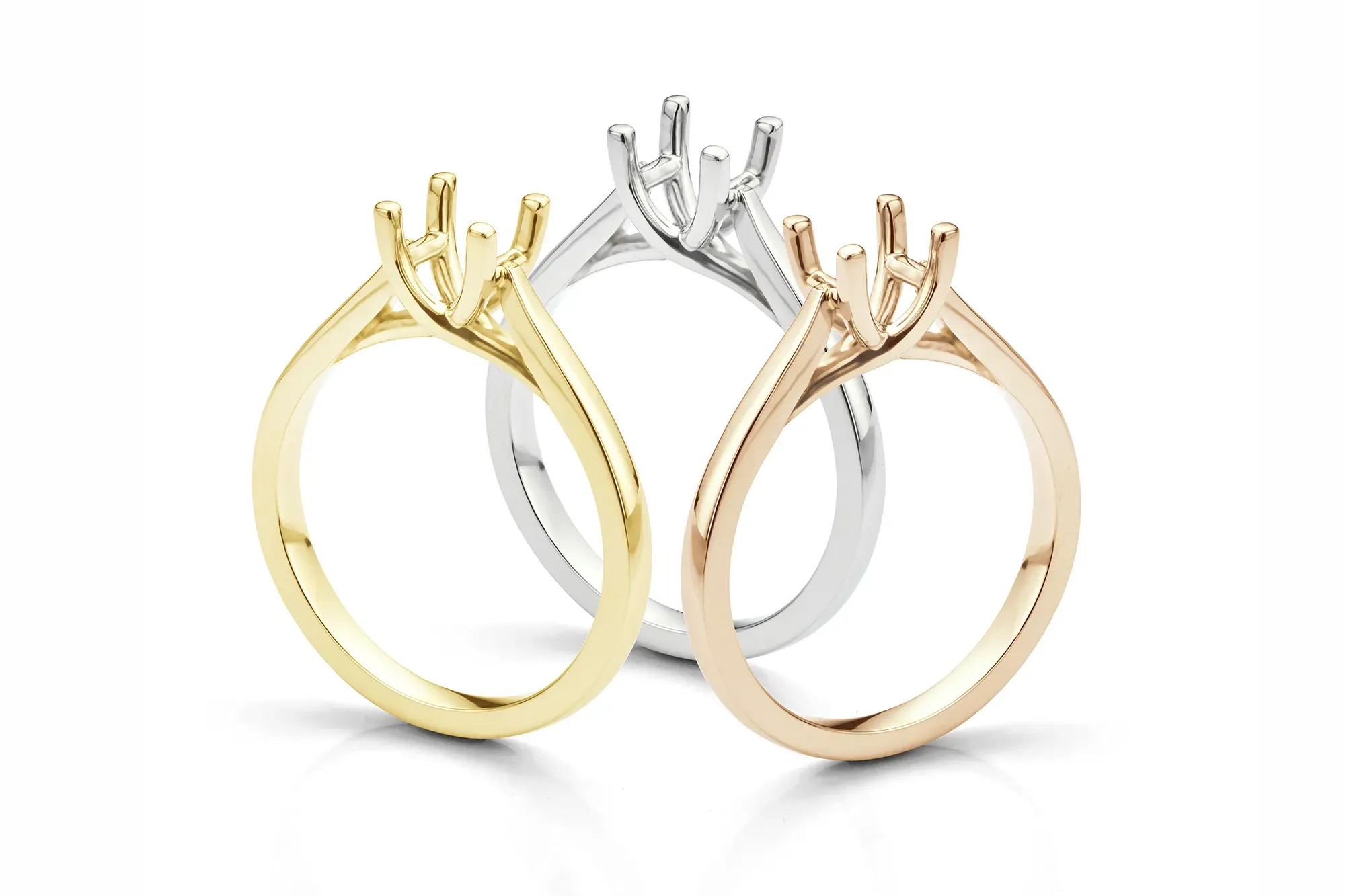
Budget
Your budget may well be a major deciding factor: gold comes in cheaper than platinum. But it's worth noting that 14k white gold is plated with rhodium to achieve the white metal finish, and this plating will wear over time. Replating can be relatively inexpensive but there are no hard and fast rules about how often you will need to get it done. Depending on the ring, the lifestyle of the wearer, and how robust the plating is, some rings need replating every couple of years while others go much, much longer.
Don't forget, at some point you'll also be buying wedding rings! If you want your wedding ring and engagement ring to be the same metal it's worth bearing this cost in mind too.
A lifetime of wear
Each metal ages in its own way, and the look of the ring in years to come is something to bear in mind. For example platinum is extremely hard wearing; it's the hardest of the metals commonly used in jewelry, but it will still get knocked and scratched over time developing a patina which is duller (yet desired and still very beautiful) than when the ring was new and highly polished.
If you're looking to choose a gold ring don't forget that, as mentioned above, the plating on a white gold ring will require upkeep. However yellow gold and rose gold are alloyed so there's no risk the surface color will wear through. Yellow gold is famous for remaining bright, but it is slightly more at risk from scratches and dents than platinum because it's softer. Rose gold is alloyed with copper, and over time the copper oxidizes and becomes a touch darker. But it's by no means a huge difference, and for most people simply looks 'rosier'!
Ultimately there is now right or wrong choice of metals, simply the one that is right for you. Let's dive into the main choices:
Platinum
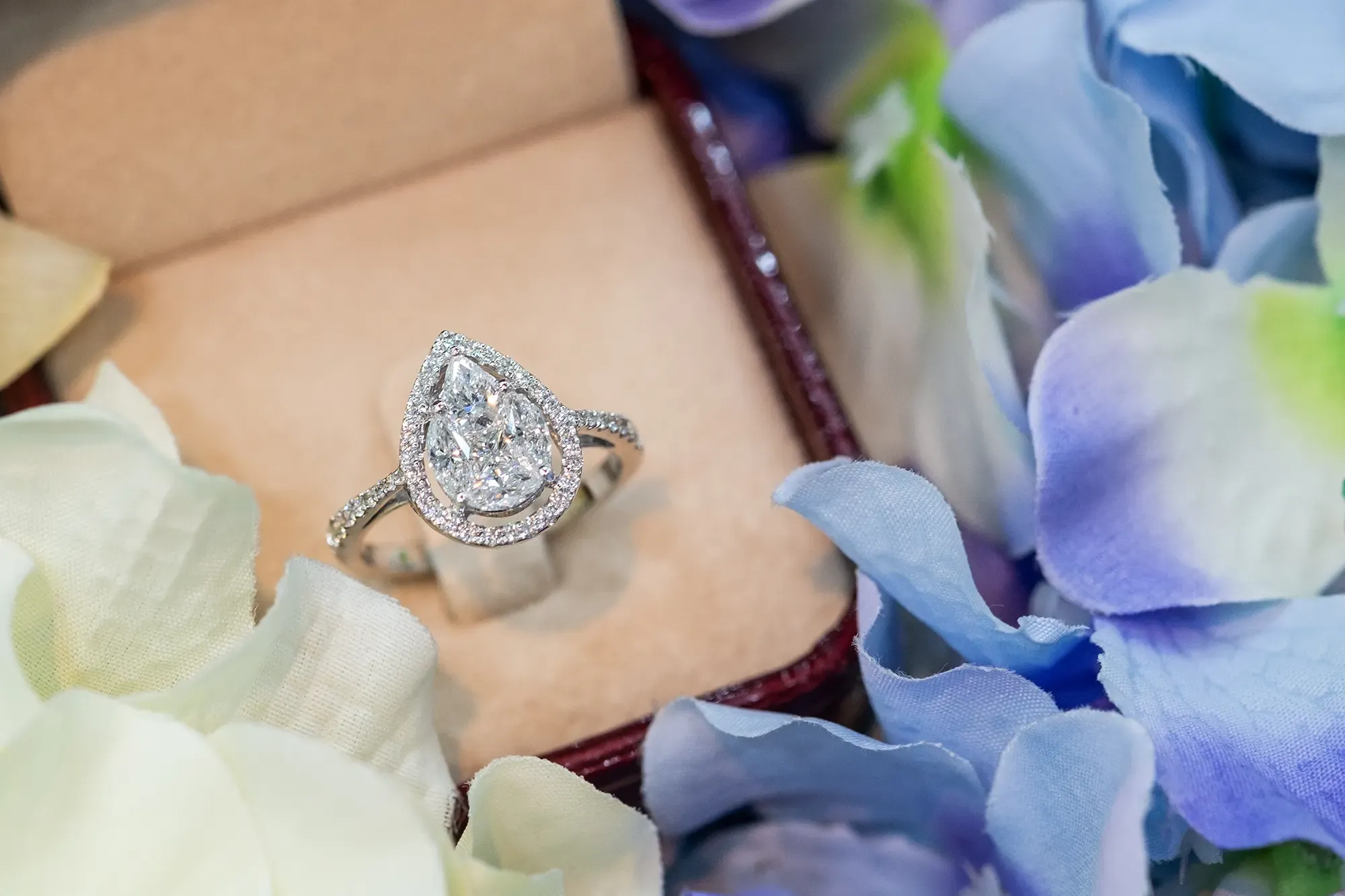
Platinum is the luxe choice: it's the rarest and most expensive of the precious metals. It is both malleable and exceptionally strong and durable, making it perfect for jewelry making. Its silver-white color sets off diamonds perfectly, and is a great choice if the diamond you are setting is in the colorless grades, accentuating brilliance and scintillation.
It's also a pure precious metal; the platinum used will be not far off total purity, unlike the gold alloys. Its color is natural, rather than coming from any plating or alloys. Platinum is also a denser metal than gold, so will feel heavier on the finger.
Whilst being a very durable choice, platinum will develop a patina with age. It doesn't tarnish, but over time the surface will take on small scratches and bumps, and will dull. However rings can be buffed back up to a high shine by a jeweler.
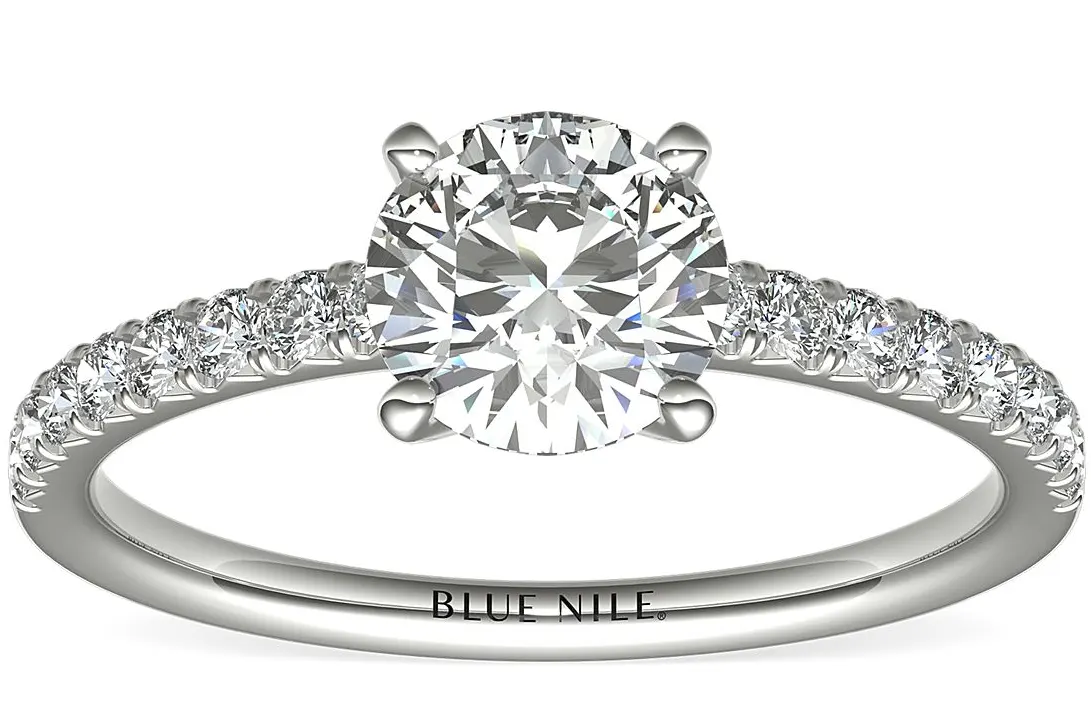
The platinum of this scalloped pavé diamond ring ensures the center diamond is set off to perfection.
Gold
First up, a word about karats. Not to be confused with carats. Or indeed carrots (yum!).
'Karat' is the term used to denote the measurement of the purity of gold. Pure gold is 24 karats, and anything below that indicates the proportion of gold in an alloy, out of 24 parts. So 18 karat gold is 18 parts gold to 6 parts alloy. 14 karat gold is 14 parts gold, 10 parts alloy. You get the picture. Karat is usually abbreviated to simply 'k', such as in 18k gold. Pure gold is not used in jewelry making, primarily because it's too soft. Engagement rings tend to be 18k or 14k gold.
'Carat' is the unit of measurement for the weight of a gemstone, in our context most commonly diamonds. You can find plenty more on diamond carats here.
You will occasionally come across gold purity referenced as carats, rather than karats. And because language is known for avoiding hard and fast rules this is technically still correct. Here it's usually abbreviated to ct as in 18ct gold.
White Gold
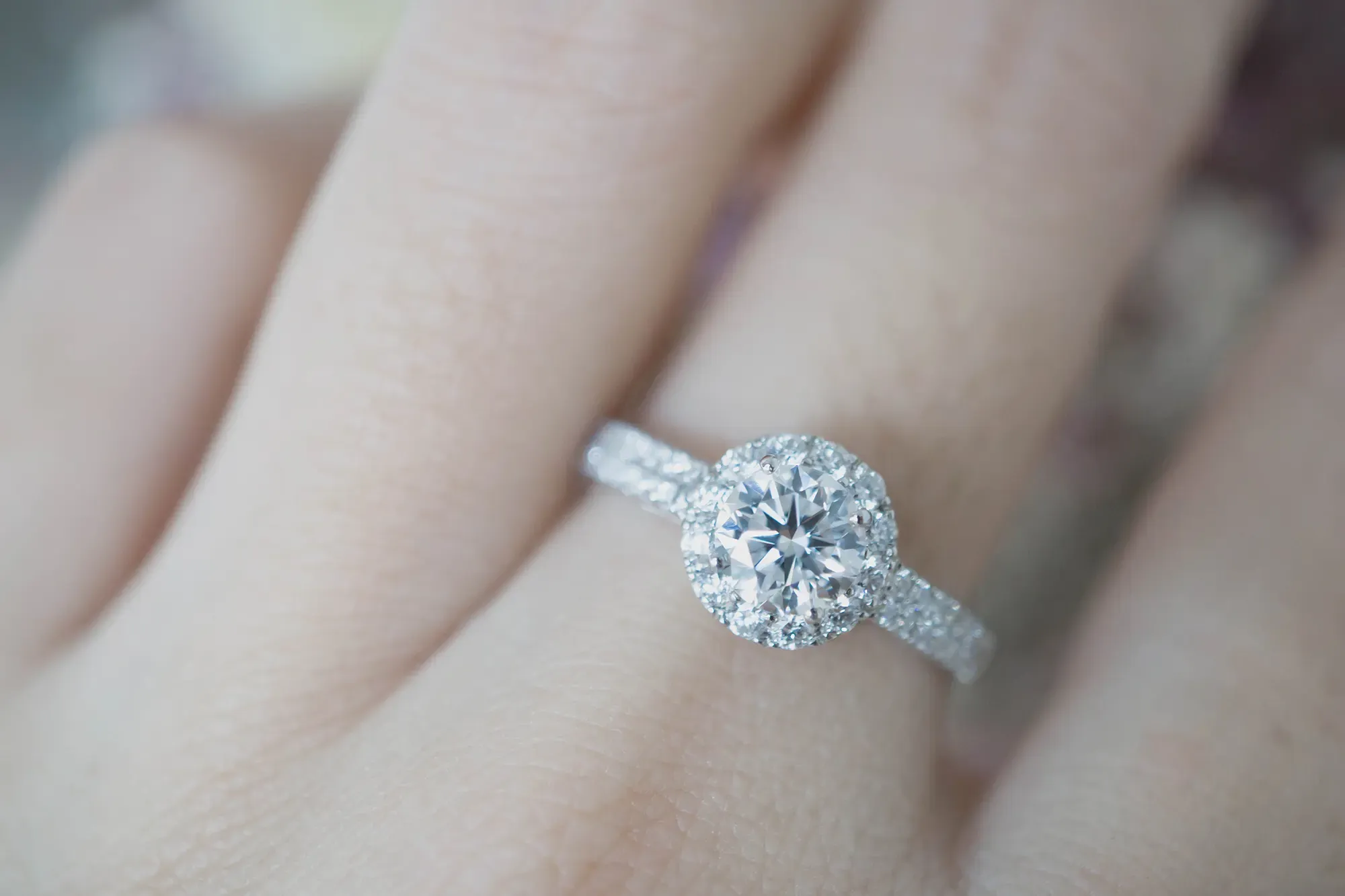
White gold is a popular and beautiful choice. Most commonly available in 18k or 14k, it has the cool look of platinum but with a noticeably less expensive price tag. It is made of yellow gold alloyed with white metals such as nickel, zinc or palladium from the platinum family. As with platinum, white gold is ideal for diamonds in the colorless grades, helping reflect white light to accentuate brilliance and sparkle. White gold is often plated with rhodium, a white metal which again is from the platinum family. The rhodium may wear over time and need re-plating.
What's the difference between 18k and 14k white gold?
The choice can be confusing - when plated, both options look the same. 18k white gold contains more pure gold, making it more valuable. Also, whilst 14k gold is almost always rhodium plated, 18k might well not be. It has a naturally brighter white than 14k white gold because it is more stable; with less alloyed metals, it is less prone to oxidizing and tarnishing. And with a lower proportion of alloys, 18k gold is also a better choice for those with sensitive skin, who may have an allergy to nickel.
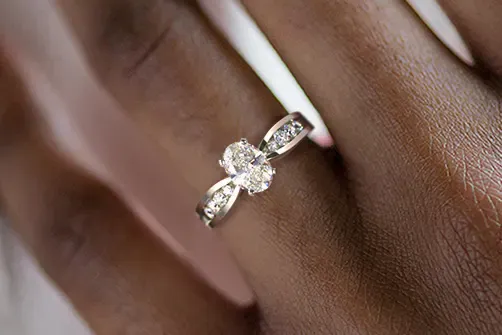
Available in both 18k and 14k white gold, the elegant lines of this bow-tie channel set ring bring your attention straight to the sparkle of the center stone.
So which to choose? Well, if your budget allows, 18k white gold can give a brighter appearance and if it isn't plated, there are no concerns about the plating wearing through. However 14k white gold, rhodium plated, is a beautiful white metal choice. So ultimately it's down to what's right for you.
Yellow Gold
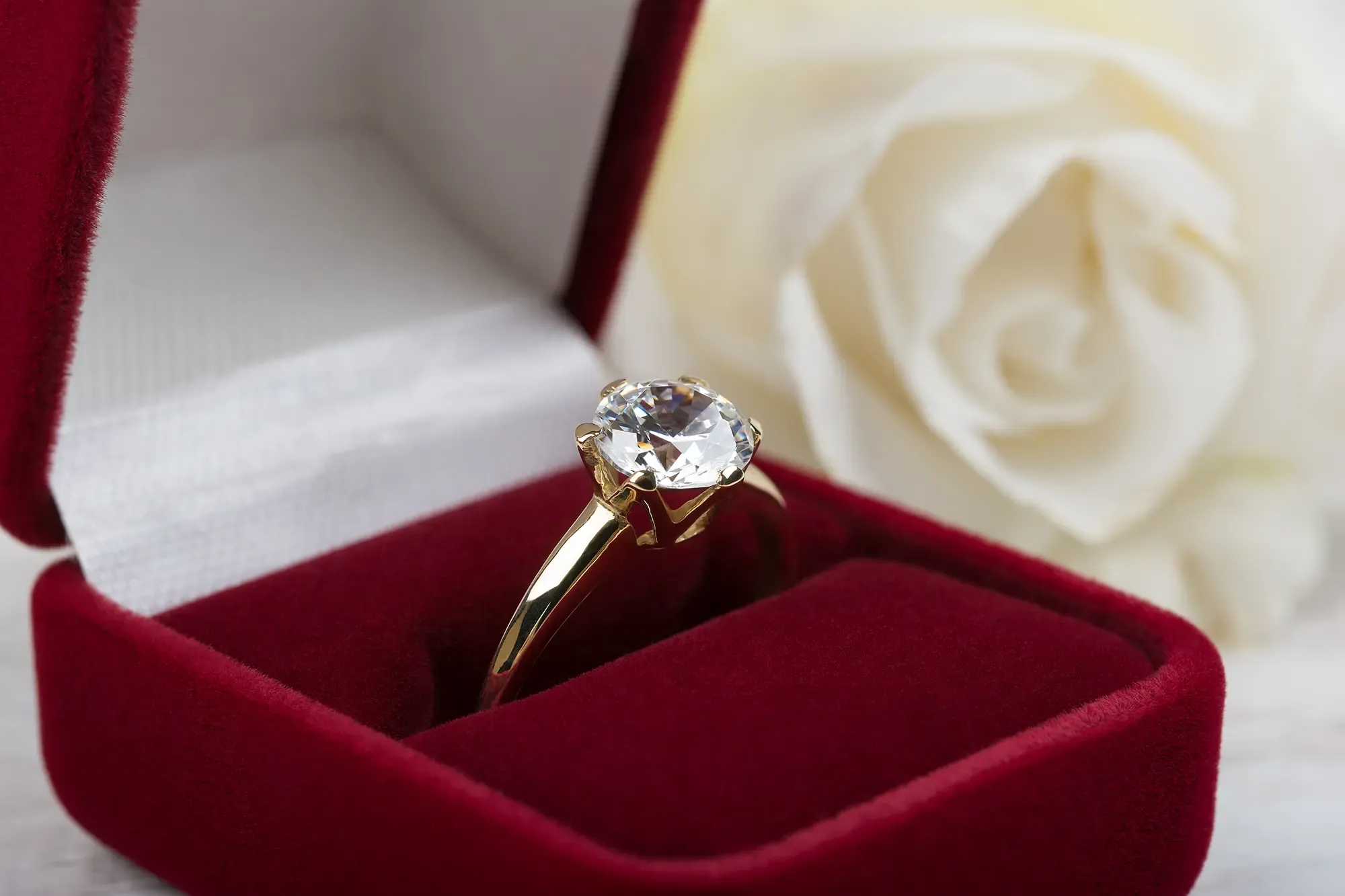
Yellow gold has been used in jewelry for thousands of years, and can be used equally well in a traditional, quirky or ultra modern ring design. Yellow gold gives a warm feel compared to the silvery whites of white gold or platinum. It is also particularly flattering to diamonds of a lower color grade. Yellow gold should be avoided if you're going for a high color grade diamond, or a stone cut with large facets, to avoid the yellow light reflecting back into it.
Opting for yellow gold certainly doesn't limit your style either - it can be used equally well in a traditional, quirky or ultra modern ring design. This pear sidestone ring from Blue Nile would set off any brilliant cut diamond perfectly, whilst this elegant intertwined tension setting from James Allen really makes a feature of the yellow gold metal as well as the center stone.
Most often alloyed with silver and copper, the karat weight you choose is really down to personal preference and budget. Both 18k and 14k gold are durable enough for an engagement ring.
Rose Gold
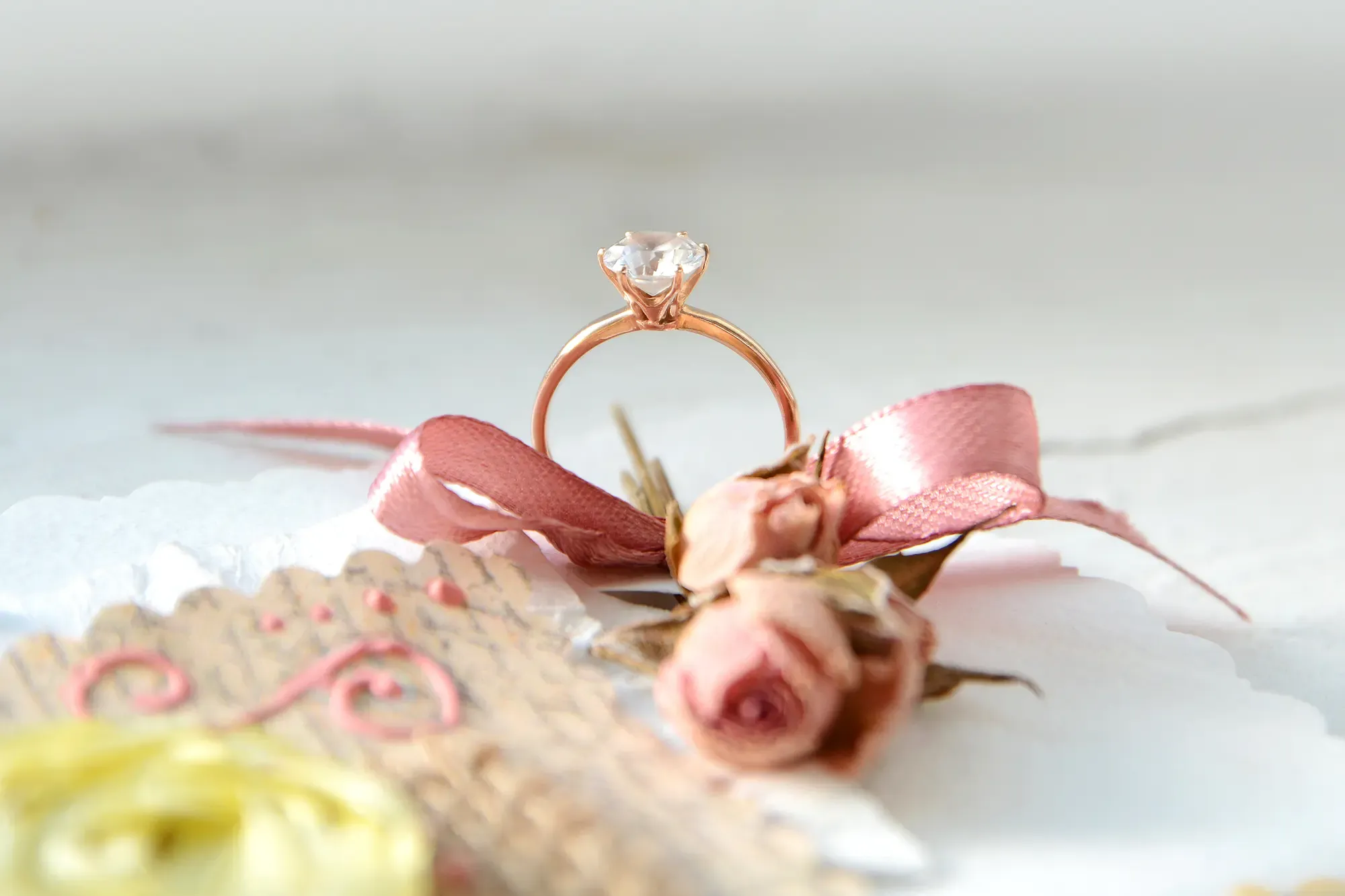
Rose gold has increased in popularity over the last few years due to its non-traditional pink hue and romantic vibe. Gold is alloyed with copper, and sometimes a little silver. As with yellow gold, the warmth of the metal color means you can pair it with lower color grade diamonds.
There are plenty of fans of rose gold for its individuality - being less popular, you're far less likely to come across someone with the same ring style as you.
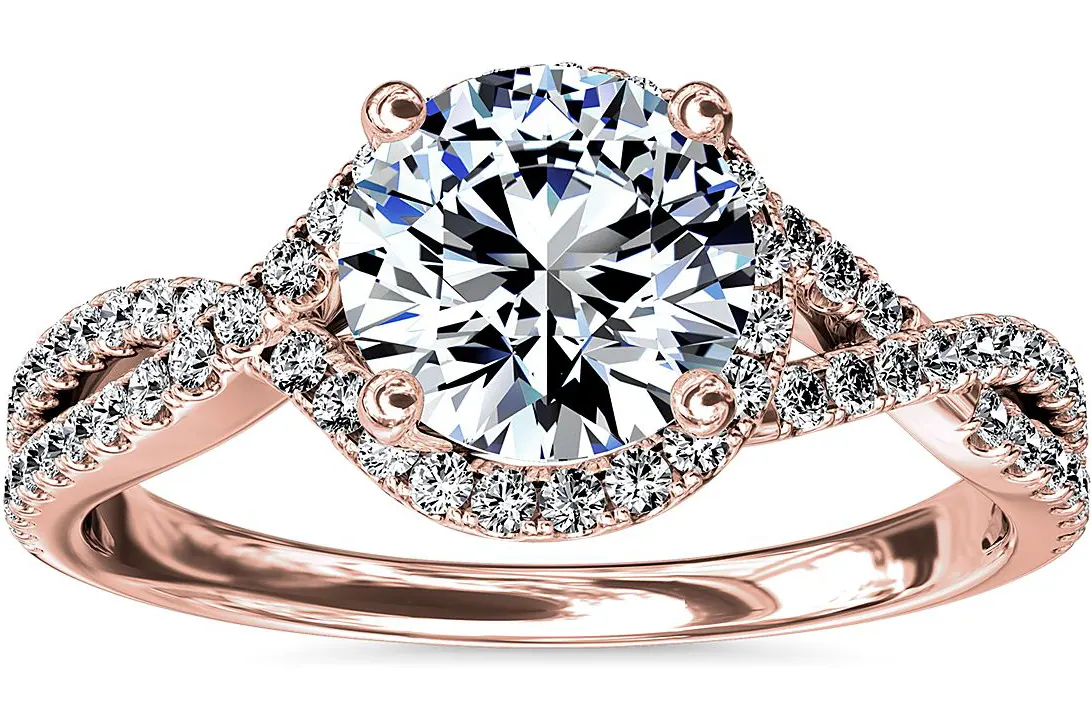
This rose gold twisted halo engagement ring brings an individual look that is also truly romantic.
Palladium
Emerging as an alternative to platinum, palladium grew in popularity when it offered significant savings over platinum. However, metal prices have shifted and at the time of writing the savings have narrowed significantly.
Palladium offers the white-metal look, and is a pure metal from the platinum family. It's less dense than platinum, so doesn't carry the same weight on the finger. Palladium can become more brittle as it is heated and worked by the jeweler which can make resizing down the line trickier.
So, which is the best metal to choose for an engagement ring?
As you can see, each metal comes with its own list of characteristics. Ultimately it's down to how you feel about the pros and cons of each, and which one you - and the person who's going to wear it - like the most. Doing your research to pick the right diamond and the right metal means you'll choose something that is cherished for ever.
To ensure you get the center stone absolutely right, brush up on the 4Cs of diamond buying here, get your head around scintillation, fire and brilliance here. And if you've noticed diamond fluorescence on grading reports and want to know more, our guide can be found here.

